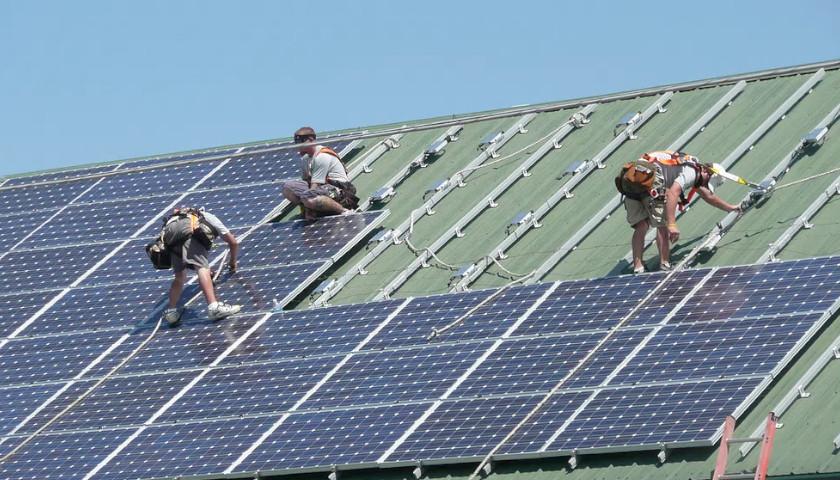by Anthony Hennen
Though more workers have jumped in recent years from carbon-intensive jobs – like natural gas extraction – to “green” jobs in renewable energy, the numbers remain miniscule.
Fewer than 1% of workers make a fossil fuel-to-renewable jump, while most end up in another carbon-intensive job, an unrelated job, or find no work at all.
So argues a study by economist E. Mark Curtis of Wake Forest University, Layla O’Kane of Lightcast, a labor market analytics firm, and economist R. Jisung Park of the University of Pennsylvania. The trio analyzed 130 online work profiles to track workers who make an industry shift.
“The vast majority of workers in carbon-intensive jobs have not historically found work in green jobs,” they noted. “Conversely, the vast majority of workers obtaining green jobs do not come from carbon-intensive industries, but from a wide range of other industries and occupations (e.g. Sales Managers, Software Developers, Marketing Managers).”
Where a worker lives, how old they are, and how educated they are plays a role.
“Overall, workers without a bachelor’s degree are significantly less likely to transition into green jobs, as are older workers (e.g. workers in their 40’s and 50’s),” Curtis, O’Kane, and Park wrote. “In some local labor markets, such transitions appear exceedingly rare, despite a large number of workers in dirty jobs, who may increasingly face declining labor market prospects due to climate mitigation policies.”
In Pennsylvania, workers tend to stay in dirty jobs rather than make a green transition.
The commonwealth ranks eighth overall in dirty-to-dirty job transition, the authors found. Neighboring Delaware is number one, while West Virginia and Ohio are nine and 11, respectively.
Pennsylvania’s cities, too, struggled with a transition. Pittsburgh was 13th for dirty-to-dirty jobs and Philadelphia was 15th.
The Pennsylvania Department of Environmental Protection commissioned a report in 2022 that counted almost 95,000 workers in the state’s clean energy labor market, reflective of some rankings that place Pennsylvania highly for clean energy jobs.
Much of the growth in green jobs, Curtis, O’Kane, and Park found, came from solar (32%) and electric vehicles (38%), followed by wind (14%).
That could bode ill for dirty-to-green transitions in Pennsylvania, however.
The state’s solar and wind production is minimal, and EV manufacturing is increasingly concentrated in the Midwest and South, thanks to state subsidies in Illinois, Georgia, North Carolina, and others.
The shift to more green energy “could exacerbate underlying trends in labor market inequality,” Curtis, O’Kane, and Park noted.
The change threatens to leave older, less-educated workers behind.
“We find that workers without a college degree and older workers are significantly less likely to transition into green jobs, and more likely to remain in carbon-intensive jobs,” they wrote. “The high rate of employment persistence within dirty jobs in some localities suggests that there may be limits to the extent to which local labor markets are able to absorb the workers who will be displaced by the move away from fossil fuels.”
– – –
Anthony Hennen is a reporter for The Center Square news wire service, covering Pennsylvania, and co-host of Pennsylvania in Focus, a weekly podcast on America’s Talking Network. Previously, he worked for Philadelphia Weekly and the James G. Martin Center for Academic Renewal. He is managing editor of Expatalachians, a journalism project focused on the Appalachian region.





